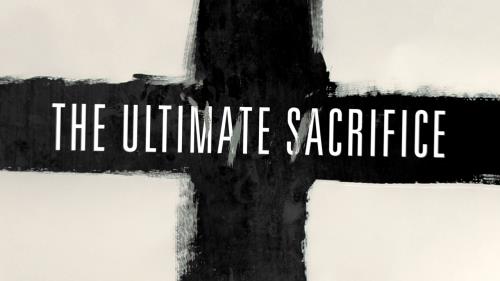-
Jesus Returns Home One Last Time Series
Contributed by Warren Lamb on Nov 28, 2017 (message contributor)
Summary: They say, “You can never go back.” “They” are right for the most part – and there really is no need to, except to allow where and who we have been to give us a proper perspective on who we have become. I cannot help but wonder how much of that Jesus felt
Philip Yancey, in his book, The Jesus I Never Knew, gives this illustration: "George Buttrick, former chaplain at Harvard, recalls that students would come into his office, plop down on a chair and declare, ’I don’t believe in God.’ Buttrick would give this disarming reply: ’Sit down and tell me what kind of God you don’t believe in. I probably don’t believe in that God either.’
And then he would talk about Jesus, the corrective to all our assumptions about God.
“For it was the Father’s good pleasure for all the fullness to dwell in Him, and through Him to reconcile all things to Himself, having made peace through the blood of His cross; through Him, I say, whether things on earth or things in heaven (Colossians 1:19-20).”
Where we have arrived in our progress through the Gospel of Matthew seems at first glance to be a short and simple account of the final visit that Jesus makes to the town where He grew up. How like the people in Jesus’ hometown are we, I wonder. How much de we assume about Him that is incorrect?
As we examine this story, it becomes apparent that there is much more happening than appears on the surface.
Most scholars agree that this is what is known as Christ’s “Second Rejection at Nazareth.” More on that shortly.
You heard me say, “Final visit,” right? Two other passages of Scripture mention Jesus returning to Nazareth and teaching in the synagogue there. Those are Mark 6:1-6, and Luke 4:16-30.
When we read these three accounts and the contexts that they are in, there seems to be a bit of a dilemma: are these three accounts of the same event, or two accounts of one event and a single account of a second event?
I don’t want to spend a lot of time on this because it can get pretty convoluted, and I want to keep this as simple and clear as I can. Let me not keep you in suspense – the answer is that there are two different incidents, two different times when Jesus is rejected at Nazareth, and we get a supporting mention in John 4:43-44 that helps us see this.
Let me give you a little bit of a time-line harmony of the Gospels to help us out. Let me preface this by saying that some want to use this story and the three differing timetables as proof that “the Bible is full of errors and contradictions and cannot be trusted.” Nothing could be further from the truth. It is just that, if you want to attempt to make that lie credible, this is, on the surface, a ready place to find the evidence to support that. Let’s look at it though. I’m sure you will find that the truth is really quite simple.
Okay, first of all, we have to understand that the layout of the Gospels of Matthew and Mark, are not as historical chronologies and were never intended to be. Luke and John, on the other hand, do follow a predominantly chronological order with only a couple of exceptions. Each of the gospels has a different approach and a different target audience.
As we saw before, Matthew does a very good job of collecting like-teachings of Jesus into pockets and strategically placing them throughout his Gospel record. The Sermon on the Mount and the Parables of the Kingdom are two such examples.
Matthew’s Gospel is an account of the long-awaited descendant of King David, promised to David and his people, the One who would be not only the true and righteous King of Israel, but King over all the earth.
The Gospel of Mark is the Gospel in a hurry, the story of the Servant of God and the Servant of the Word of God.
Luke’s Gospel is about Jesus the Son of Man, descendant of Adam and the One who brings God’s grace to all of humankind, Jew and Gentile alike.
The Gospel of John approaches from the Godhood of Jesus, the pre-eminence of Jesus, and presents to us Jesus, the Son of God.
When we look at a snapshot of the timeline of the four Gospels, we see that there is a layout of events in each that is on one hand somewhat chronological, and on the other hand somewhat sequential using other criteria. Luke and John do follow an almost straight chronology.
Some may ask, “Why would things be seemingly so out of order in Matthew and Mark, but not in Luke or John?” The answer really is quite simple: It takes all four of the Gospels to get the vivid picture of Jesus Christ that we have today, and each Gospel writer, like our newspaper reporters today, tells the same story from just a little different perspective. These men were either eye witnesses to the things they record or they were close and intimate associates of those who witnessed these things.

 Sermon Central
Sermon Central



